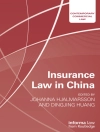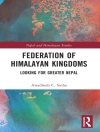Why have Africans not gained a more dominant position in urban manufacturing in Kenya? This question is explored through an analysis of the institutions, both formal and informal, that have affected patterns of capital accumulation in Kenya by the African and Asian (Indian) communities. Using a new institutional economics approach, this book explores the history of economic activity through the pre-colonial, colonial and post-colonial periods, including the transformative period of British rule. During the colonial period, Asians were brought in to build the railways and subsequently focused on urban-based activities. Africans, meanwhile, found it difficult to move out of agriculture. Thus, the ethnic-sectoral division of activities was entrenched by the formal laws and powers of the British. Following independence, the network and financial capital that Asians had built up allowed them to survive early attempts at the Africanization of industry. Africans, now supported by the formal institutions of the state, still found it difficult to engage in manufacturing because they lacked the informal networks that support trade and credit. The analysis is supported by the results of a contemporary survey of 120 manufacturing firms in Nairobi’s metal sector that highlight the division between smaller African firms and larger Asian ones.
Paul Vandenberg
The African-Asian Divide [EPUB ebook]
Analyzing Institutions and Accumulation in Kenya
The African-Asian Divide [EPUB ebook]
Analyzing Institutions and Accumulation in Kenya
Buy this ebook and get 1 more FREE!
Format EPUB ● Pages 240 ● ISBN 9781135527433 ● Publisher Taylor and Francis ● Published 2013 ● Downloadable 6 times ● Currency EUR ● ID 2789651 ● Copy protection Adobe DRM
Requires a DRM capable ebook reader












